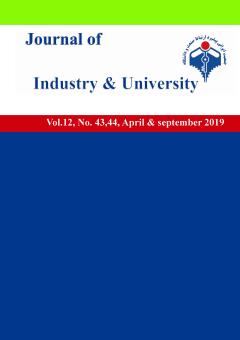-
-
List of Articles
-
Open Access Article
1 - The Incentives and Methods of Moving towards Self-governance at Iran’s Universities: A Critical Investigation
mohammadreza zahiremami -
Open Access Article
2 - Payame Noor University and the horizon of future combined education
Mohammad Reza Zamani Mohammad Khalaj -
Open Access Article
3 - The Necessity of Legal Support from Textile Industry
ali mashhadi Maedeh Pour barkhordari -
Open Access Article
4 - Investigate and identify the challenges of the relationship between industry and academia
Kamran Malekpour ali delavar saeed ghiasi -
Open Access Article
5 - Investigate the relationship between busy managers and earnings management with emphasis on the role of corporate governance at listed companies in Tehran Stock Exchange
Ameneh Bazrafshan Aynaz Khorasanian -
Open Access Article
6 - Ranking of the key success factors of outsourcing activities of universities maintenance and repair services using the Fuzzy approach (Case: Semnan University)
Nasrin Rahae Mohsen Shafiei Nikabadi Azim Zarei
-
The rights to this website are owned by the Raimag Press Management System.
Copyright © 2017-2025







